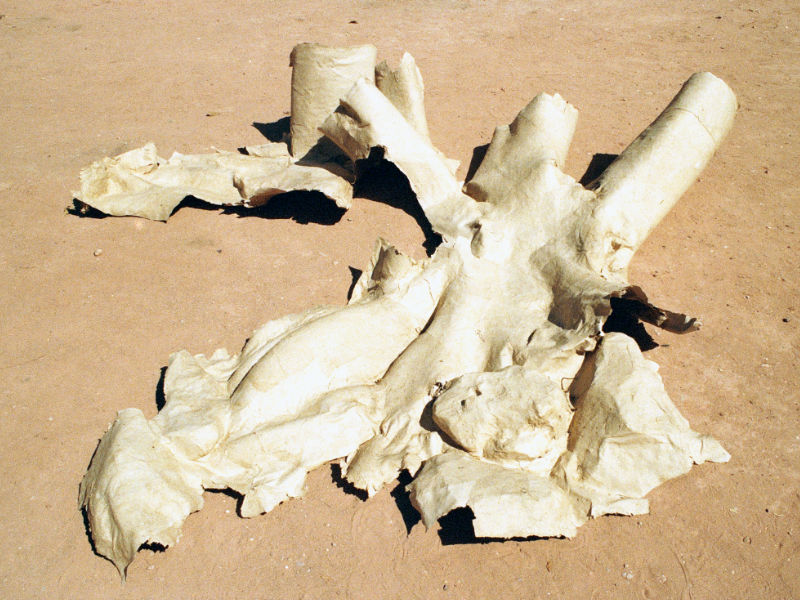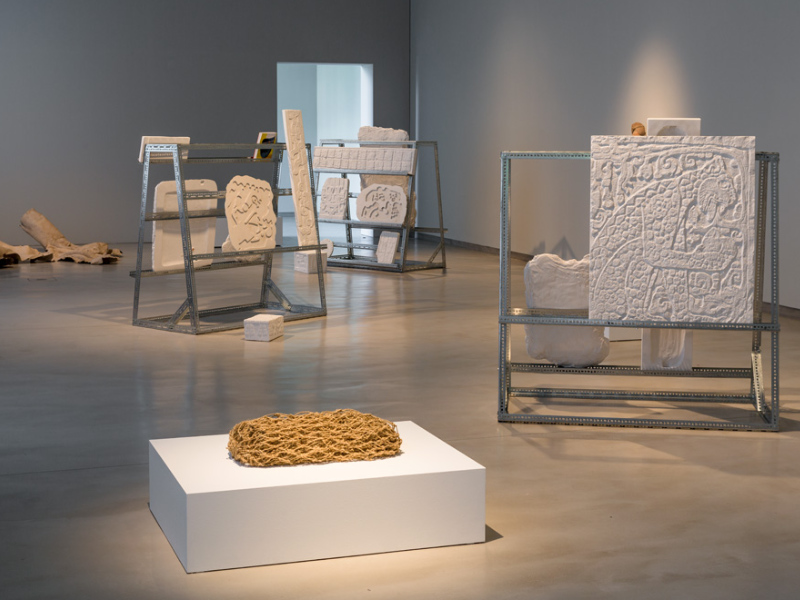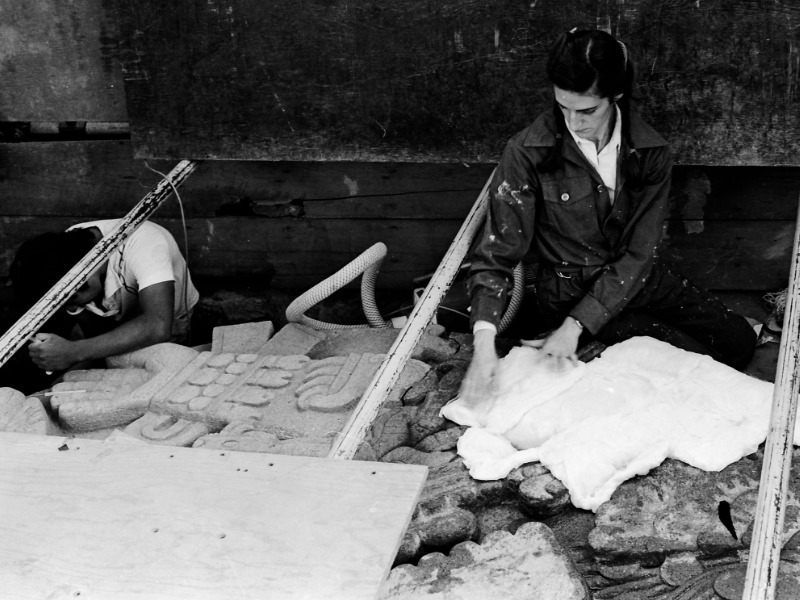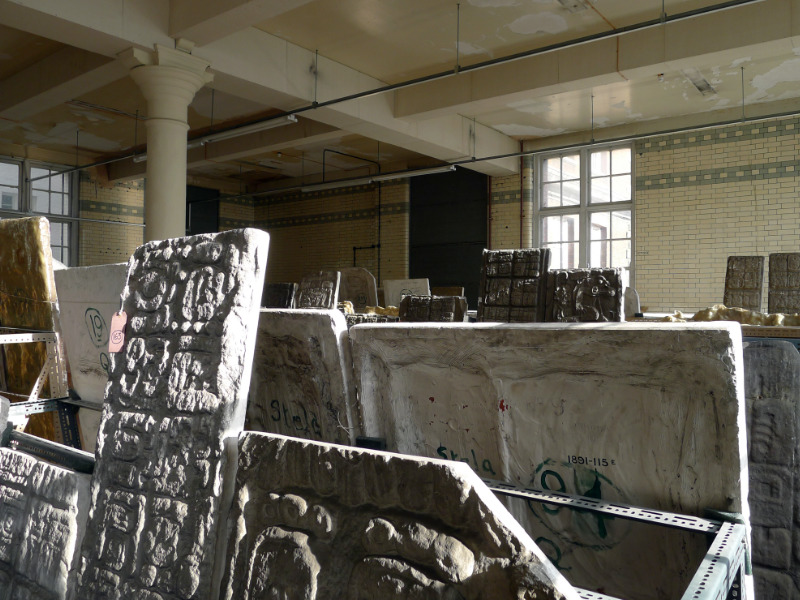go to exhibition
Mariana Castillo Deball takes great interest in the residues and byproducts of archaeological investigations. For You Have Time to Show Yourself Before Other Eyes, the artist worked with the legacy of the British explorer Alfred Maudslay, who travelled extensively through the Maya region of Mexico and Guatemala between 1880 and 1920.
Maudslay documented the inscriptions on monuments through drawings, photographs and plaster casts. He also developed a technique that used papier-mâché to create a negative of the original inscriptions. Some of these molds are the only remaining testaments of the “positives,” which have since been looted or destroyed. These objects are piled up in the warehouses of the British Museum, where they are considered to be mere copies, phantasmal fragments without the value of an original piece.
Castillo Deball came across Maudslay’s work through the archive of the Scottish artist Eduardo Paolozzi. His papier-mâché molds appear in the documentation for Lost Magic Kingdoms and Six Paper Moons from Nahuatl (1985), an exhibition in which Paolozzi recovered objects from the warehouses of the Museum of Mankind in London (now the British Museum). Since 2011, Castillo Deball has experimented with Maudslay’s technique to make molds that capture the form of trees (Tree Trap, Mexico) or urban surfaces in Mexico City, Oaxaca, Berlin, Scotland and Costa Rica.
The pieces Jaguar Storage, Papantla Storage and Hieroglyph Storage present sets of negatives and plaster casts of facsimiles, or objects whose classifications have changed, which were found in the Mesoamerican collections of the Ethnological Museum of Berlin. Castillo Deball collaborated with the reproduction workshops, or Gipsformerei, of the city’s state museums. The metallic industrial supports on which these works are displayed were inspired by the warehouses of the British Museum, as well as the Maya buildings where some of the pieces reproduced herein were originally found.
In this gallery, a constellation is formed between these pieces and a stele with a bas-relief of a jaguar (900–1250) from Chichen Itza, as well as a reproduction of a frottage by the archaeologist Merle Greene Robertson made in the nineties, at the site’s Temple of the Jaguar. It also includes a study for a bas-relief by Eduardo Paolozzi, from the collection of the Museo de Arte Carrillo Gil.






